The Metamorphosis of an Orthodox Settler:
How Rabbi Hanan Schlesinger Learned to Love his Palestinian Neighbors
Susan Hoechstetter interviews the cofounder of Roots – Part 2
In this second interview with Rabbi Hanan Schlesinger, he talks about his transformation from an American-born Orthodox rabbi and West Bank settler who once didn’t see Palestinians as real human beings, to an activist for peace with valued Palestinian partners. Rabbi Schlesinger is a cofounder of Roots-Shorashim-Judur, an organization that brings together Palestinians and Israeli settlers, Muslims, Christians, and Jews, to build bridges through listening to one another and eventually recognizing the other’s identity and humanity. He believes that Israelis and Palestinians will not be ready for peace until they get to know each other better, and that religious Jews and Muslims have to be part of that process.
Susan Hoechstetter: Hanan, how did you, an Orthodox rabbi, a West Bank settler, come to work with Palestinians and Israelis for peace?
Rabbi Hanan Schlesinger: In January 2014, I began to go through a transformation and become a different person than before. Here’s my story: In 2013, I returned to Israel after eight years in Dallas, Texas, as a rabbinic emissary from Israel to the Dallas Jewish community. I wanted to create a framework for interfaith dialogue here in Judea and Samaria [aka, the West Bank], where I live. But I knew that the American framework for interfaith dialogue wouldn’t work in Israel. In America, there’s a common matrix of civil society – language, culture, a public square. But here, we don’t have that square or commonality between Jews, Christians, and Muslims that would allow for dialogue to take place where you already know the person across from you as a human being.
So I decided that, first, we just have to meet each other as human beings before getting to religion. And I realized how much of a bubble I lived in. I didn’t know my Palestinian neighbors. In Alon Shvut [a settlement in the Gush Etzion area], where I live, we are literally within a five-minute walk of each other. But no one knows the other. No one! Our villages, towns, religions, cultures, languages, schools, stores, and calendars are different. We live in completely separate worlds.
I wanted to meet my neighbors. A Protestant pastor from Reston, Virginia, named John Moyle (Really!) has a Christian ministry and comes to the Holy Land twice a year to meet with Israelis and Palestinians, and then he introduces them to each other. In January 2014, we got to know each other and he told me about an upcoming, nearby meeting of Palestinians and Jews. A week later, I went to the front door to leave for the meeting and my wife asked me where I was going. I said I was going to meet Palestinians. She was terrified; she screamed and begged me not to go. I, too, was frightened, but said that I had to go. I walked to the meeting place. That’s how close we live to each other. I walked through the vineyards, orchards, empty land, and got to the place. And from the minute I entered the open field where we met – I’m not exaggerating – my life changed.
I saw a miracle. I saw 15 Israelis and 15 Palestinians talking to each other, informally. I didn’t recognize anyone. I saw a Palestinian woman who wasn’t talking to anyone. Her whole body was covered, except for her face, because she was an observant Muslim. I walked up to her and said hello in English. She said hello back, and we talked for about a minute. “I can’t believe that I’m talking to you,” I said. And she said, “I can’t believe that I’m talking to you because we don’t talk to settlers.”
Just about all of the Jews there were settlers in the West Bank. We were local people meeting local people. The woman’s son walked over to us. She told me that his name was Yazan. We shook hands. He said he was 17 years old. He was wearing a windbreaker with the words in English, “Seeds of Peace.”
I thought to myself: “This can’t be. These are Palestinians. The Palestinians don’t have anything to do with peace; they are terrorists.” I was pretty sure he had found the jacket on the floor and didn’t know what the words meant. I asked him what Seeds of Peace was, and he told me that it’s a summer camp in the U.S. that takes Palestinian and Israeli kids out of the conflict zone for recreation and reconciliation. He had just gotten back from the camp and had had a great time. He’d met Israeli kids and was now friends with them on Facebook. He said that this summer was so important to him, that he was transformed, and as a result, he would spend some of his life building bridges to peace between Palestinians and Israelis.
As I was listening to him, I had no idea if I could believe what he was saying. I was so confused and unsettled. And then his father, Jamal, walked over. We shook hands. He took out his phone to show me on Google Maps where he lives in [nearby] Beit Umar. I was staring at his phone, thinking: “Palestinian, smartphone. How could that be?” It sounds so stupid when I tell you this, but I just couldn’t believe that these people were human beings.
And he told me that a friend once asked him to come along to a dialogue in Jericho between Muslims and Jews. The guy kept bugging Jamal and he finally went. He said that the Jews and the Palestinians sat in a big circle, but Jamal did not participate because he was against it. He sat in the corner and just listened. At one point a Jewish guy got up and looked at him. Jamal said: “He came right up to me and stuck out his hand and I had to shake his hand. And when the guy left, I ran to the bathroom to wash off my hands from the filth of touching an Israeli, and I thought I’m never coming back to this place.”
But, somehow, he came back. And Jamal took out his smartphone again and showed me a picture of the entrance to his house, and a plaque that says “Jamal’s Family, House of Peace.” And he said: “In Jericho, I met a human being and a partner, and it changed my life. And I brought my wife with me and changed her life, and I brought my children and we send our kids to Seeds of Peace.”
Jamal looked at me and said: “Hanan, you know that when the children in Beit Umar see someone who looks like you, they start to cry.” I asked him why, and he did not understand why I didn’t understand. He said that it’s the kipah, it’s the beard. “Everyone who looks like you has a gun, and they kill people in Beit Umar.” After what seemed to me like a very long silence, I said to Jamal that we carry guns because we are afraid of them. And he looked at me as if I’d said the stupidest thing. He got angry and said, “No, you’re not afraid of us, because we are afraid of you.”
I was so confused; I was trying to figure out what was happening to me. The conveners for the event got us in a circle. And one of the conveners, Ali Abu Awwad, the owner of the land we were meeting on, got up and spoke, in very good Hebrew. “I am Ali. I’m a Palestinian from a refugee family. We were made refugees in 1948. In 1967, Israeli forces came and conquered us and now we live under Israeli military occupation.” I had no idea what he was talking about. What was occupation? I read in the newspaper that the UN criticized Israeli occupation, but I had no idea that it was something real. I walked in the fields of Judea every day and didn’t see occupation. I saw the return of the Jewish people to our land after 2,000 years of exile.
And Ali, with great pathos, talked about his life and about the soldiers who came and beat up his mother in front of his eyes at 3 o’clock in the morning. And he talked about being dragged to jail and being sentenced to ten years and not being told what the charges were. He told the story without rancor. And everything he said was a direct attack on my identity. But he wasn’t giving a political discourse, he was just telling the events of his life. I went home completely confused and depressed because they couldn’t be lying. They were just telling their life stories. And if that’s true, then I lived in a different world than what I thought I lived in. I had no choice but to go back and meet Ali again, and again, and again.
We spent hundreds of hours together, together with a small but growing group of local Israelis and Palestinians. Most of the time, we just listened. And we heard Ali tell his stories again and again. Then we started telling our stories of Jewish history, including exile and coming home after 2,000 years. We realized that we created space for sharing identity, and eventually more people gathered around us. Somehow the atmosphere was not about arguing; it was about listening and telling stories, and we saw that this was important – even transformative. From this humble beginning, Roots sprouted. And the organization continues to this day.
SH: What is Roots doing now and is it successful?
RHS: There is very little that I can say to convince my Israeli neighbors to think differently about Palestinians. And there’s very little my Palestinian partners can say to their Palestinian neighbors to convince them to think differently about Jews. The one thing we can do is get people to meet the other side. It doesn’t always work, but in more cases than not we have found that it creates a puncture in the hard shell of our narrative, and then there’s another meeting, and people begin to get confused, and that’s good, because they see that what they had thought is not the whole truth.
We built this organization on Ali’s family land. It became Mercaz Karama, the Dignity Center. Mercaz in Hebrew is “center” and Karama in Arabic is “dignity.” It’s the only Jewish, Muslim, Christian, Israeli, Palestinian community center in the West Bank where two sides can meet with dignity and equality. Every day there’s something happening there. It’s not within the boundaries of any Palestinian or Israeli town, so it’s accessible to both Israelis and Palestinians.
Clearly, on the macro level, we’ve had zero success. But on the micro level, I have evidence of hundreds of transformations. The first, the poster boy, is me. We have at least 100 people, on each side, with Roots who at some level have gone through that transformation, and many are on their way to it.
What we are really building is a new identity, an identity that says that this land is Palestine and this land is Israel at the same time. Ali always says that we have to fit two truths into one heart. It’s all Palestine and it’s all Israel from the river to the sea. And you have to be able to live with two truths and two narratives that contradict each other, but are both true.
[Until now] it’s been mainly secular Jews and Muslims doing peace work, and that’s not bad, but it hasn’t exposed the Israelis and Palestinians in these dialogues to the deep historical, religious narrative of the other side. When secular Muslims talk to secular Jews, they don’t tell them the things that they, the secular Muslims, don’t believe in, so they don’t bring to the fore the traditional Muslim narrative that says, for example, that the Muslims to the west of the Jordan River have an identity as the keepers, the guardians of the holy places of Al-Aqsa [Mosque in Jerusalem]. But it’s part of the mainstream traditional Palestinian Muslim identity.
And on the Jewish side, it’s the same. My close friend, Ali, before he met me and my partners just five years ago, had been involved in peace work for 15 years with secular Jews. He said that until he met me, he had never heard about the 3,000 year-old connection of the Jewish people to this land. He said that secular Jews would speak about Zionism that began about 100 years ago; that’s it. Ali said they told him we are here because of anti-Semitism, because of the Holocaust. They never told him about our connection to the land. Because they, secular Jews, don’t have that connection like religious Jews do. The way that life is polarized in Israel, it’s only for the right wing, only for religious people to talk about [that period of] history.
What it means is that peace, Oslo for example, was with secular Jews and Muslims, and the two sides didn’t bring their peoples’ deep historical identities into the equation. I think that’s one of the reasons it failed.
SH: How successful are you at reaching out to religious people on both sides?
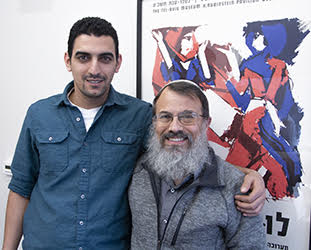 RHS: Like I said earlier, we’ve had zero success on the macro level, obviously. And the micro success is with one person at a time. It’s a drop in the bucket. But a lot of people know about us. I just saw Roots mentioned in the mainstream settlers’ newspaper, Makor Rishon, and it wasn’t negatively. We get some pushback from our neighbors, but when our neighbors meet others, there’s transformation.
RHS: Like I said earlier, we’ve had zero success on the macro level, obviously. And the micro success is with one person at a time. It’s a drop in the bucket. But a lot of people know about us. I just saw Roots mentioned in the mainstream settlers’ newspaper, Makor Rishon, and it wasn’t negatively. We get some pushback from our neighbors, but when our neighbors meet others, there’s transformation.
So we are working with religious people on both sides and are bringing religion to the fore of the dialogue. We make sure that all our activities are friendly to people who are observant. Prayer is part of our activities. Observing holidays and Sabbath is part of our activities. And we put on the table core things, such as the bad things the Quran says about Jews and the bad things the Tanach says about non-Jews. We talk about how to overcome them, how to shape the narrative so that it’s conducive to peace. Religion is part of the problem, so it has to be part of the solution. Our constituents on both sides are usually considered the enemies to peace. The challenge is to reach people with the historical, parochial narrative to see that there’s another truth. It’s exciting work.
SH: What do you think American Jews should do?
RHS: I believe that Israelis and Palestinians are not ready for peace. I’m pretty certain of that. Before we sign the agreements, we have to prepare the people. I’m assuming at this point that people-to-people work is more important than negotiations and politics.
I’ve been told that one of the major factors that helped bring the conflict in Northern Ireland to a better place was the international peace movement’s financial support. The work in Northern Ireland was a lot about religion, a lot about community building, faith dialogue, intercultural dialogue. I think we have to scale up that work here, and that requires money. So I want to see America, American Jews, committed to that. That means the American Congress, synagogues, and individuals giving money for peace.
The second point is one of narrative. I would like to see American Jews strongly supporting Israel without that meaning being against Palestine. I want to see them pro-Israel and pro-Palestine at the same time. There is a slogan: pro-Israel, pro-Palestine, pro-solution. I think many American Jews, well-meaning people, don’t realize that being pro-Israel the way it’s usually construed means being anti-Palestine. And being anti-Palestine means being pro-conflict. Because if you are against one side, you’re encouraging conflict.
I’d like to see American synagogue tours come to Israel and to Palestine as well. I’d like to see American church groups also come to Palestine and Israel. I’d like Americans to see both sides. I’d like Americans to learn Hebrew and Arabic. And, of course, I’d like Americans to join the board of Friends of Roots and support us.
SH: Would you summarize your ideology.
RHS: I coined the term “Hubris of Exclusivity,” which I think is a psychological illness that Palestinians and Israelis suffer from. It means that the individual can see true legitimacy only on their side. It means that each side thinks that the land is only mine, that we are right and they are wrong, that we are a nation and they aren’t. Palestinians tend to say that the Jews are a religion and not a people who have a right to this land. And Israelis tend to say that Palestinians don’t exist as a nation. There’s never been a Palestinian state. There are only Arabs. They can go back to Jordan. Both say the other doesn’t belong here and is nothing more than a fabricated nation. In Roots, we say that each side has the right to define who they are. And my job is to listen. That’s against the prevailing narrative according to which everyone thinks ‘I will tell you who you are.’
The Jews in Roots have learned and accepted that the other side has a very strong Palestinian national identity with longtime ties to the land. And the Palestinians in Roots have learned that while the Jews are a religion, we are also a historical people who have been connected to this same land for about 3,000 years.
So the work we’re doing in Roots is revolutionary. Both sides have come to appreciate that the other side has deep historical connection to this land and has the right to live within it with self-determination. We have gotten people to cross the red line in the sand which keeps us from recognizing each other’s collective identity, and that has allowed us to approach each other as human beings.
Since January, 2014, I’ve done no other work but this.
SH: Thank you for your incredible work and your time.
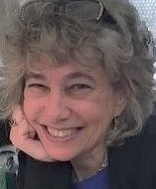
Susan Hoechstetter lives in Washington, DC where she writes about advocacy, social justice, Israel, and other topics.

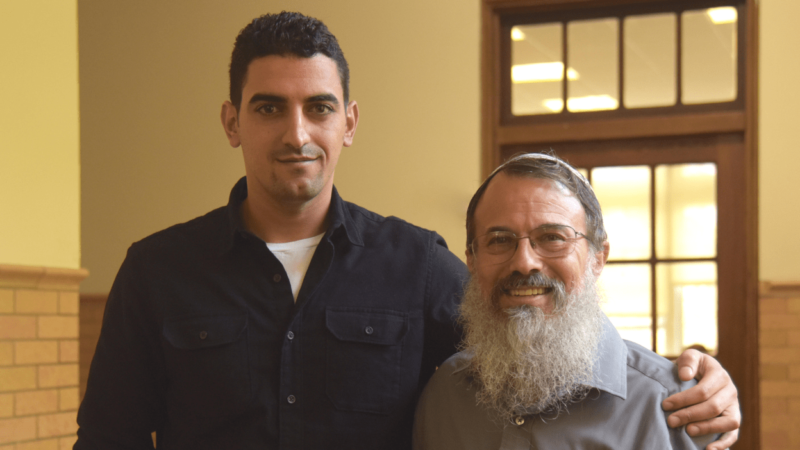
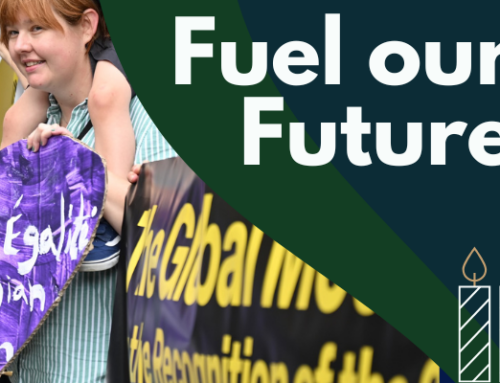
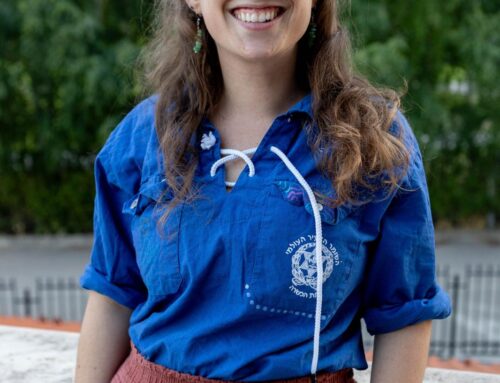
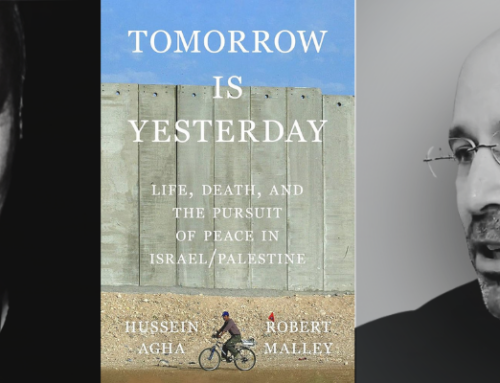
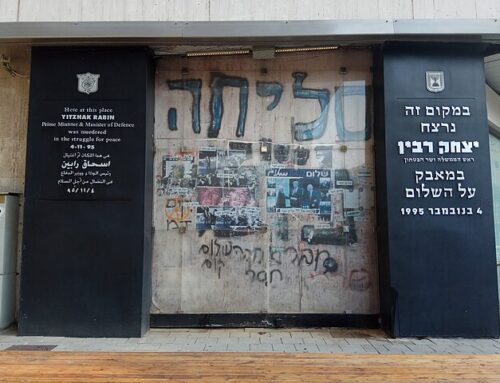
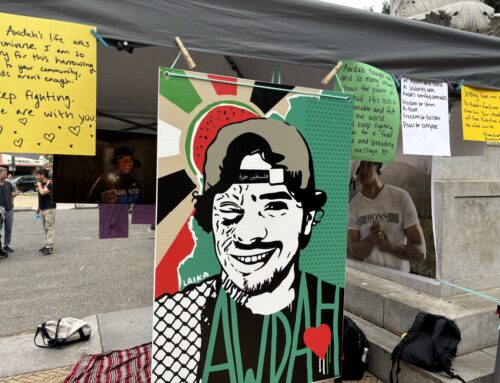
Leave A Comment